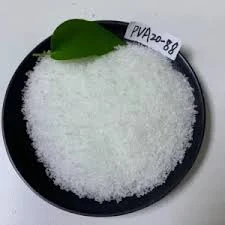The Pricing Dynamics of Hydroxypropyl Cellulose Market Insights and Trends
Hydroxypropyl cellulose (HPC) is a versatile cellulose derivative that has found extensive applications across various industries including pharmaceuticals, cosmetics, food, and construction. Its unique properties, such as water solubility, film-forming ability, and stability, make it a critical ingredient in many formulations. As demand for HPC continues to rise, understanding the underlying factors that influence its pricing is crucial for manufacturers and consumers alike.
What is Hydroxypropyl Cellulose?
Hydroxypropyl cellulose is produced by the etherification of cellulose, which involves the substitution of hydroxyl groups in cellulose with propylene oxide. The resulting product is a white, odorless, and tasteless powder that can dissolve in water, forming a viscous solution. This property, along with its capability to act as a thickening agent, emulsifier, and stabilizer, makes HPC a preferred choice in various applications.
Market Demand and Supply
The global demand for hydroxypropyl cellulose has been on an upward trajectory, driven by its increasing use in the formulation of pharmaceutical gels and tablets, cosmetic creams, and food additives. The pharmaceutical sector, in particular, is one of the largest consumers of HPC, leveraging its properties for controlled drug release and enhanced viscosity in formulations. Additionally, the rise in the demand for personal care products, particularly those that require water-soluble polymers, has further propelled the market growth.
However, while demand is increasing, HPC production is not without challenges. The extraction and purification processes of cellulose, the primary raw material for HPC, can be complex and resource-intensive. Additionally, geopolitical factors such as trade tariffs, raw material availability, and environmental regulations can lead to fluctuations in supply, further influencing pricing trends.
The Impact of Raw Material Costs
The pricing of hydroxypropyl cellulose is closely linked to the cost of raw materials. As a derivative of cellulose, the price fluctuations of wood pulp or cotton can significantly impact HPC costs. For instance, when there is a surge in demand for paper products or textiles, the corresponding increase in wood pulp prices can lead to higher HPC prices. Conversely, if there is a surplus in the market or a decline in demand for pulp-based products, HPC prices may stabilize or even decrease.
hydroxypropyl cellulos price

Furthermore, the energy costs associated with the production process can also affect pricing. As energy prices rise, manufacturers may pass these costs onto consumers, leading to higher prices for HPC.
Technological Advancements and Competition
Innovation and advancements in production technology can play a role in shaping the pricing landscape of hydroxypropyl cellulose. New production techniques that enhance efficiency or reduce waste can lower production costs, thereby influencing market prices. Manufacturers that invest in research and development to improve product quality or discover alternative sources of cellulose may gain a competitive edge, potentially affecting the overall market dynamics.
Competition among producers also plays a significant role. The hydroxypropyl cellulose market comprises a mix of established players and new entrants, each vying for market share. Intense competition can lead to price wars, especially amongst suppliers who aim to attract more clients or enter new markets. This can benefit consumers through lower prices, though it may challenge smaller manufacturers who cannot match the pricing strategies of larger corporations.
Future Trends and Outlook
Looking ahead, the market for hydroxypropyl cellulose is projected to grow, albeit with varying trends in pricing. As sustainability becomes a key focus across industries, the demand for natural and eco-friendly products could drive interest in HPC derived from sustainable sources. This shift may influence pricing as companies invest in sustainable practices and technologies.
Moreover, the ongoing global health trends and the growing preference for clean-label products could enhance the popularity of HPC in food and pharmaceutical applications. As these sectors evolve, the HPC market may see not only growth in demand but also potential price variations based on market dynamics and the raw materials landscape.
Conclusion
In summary, the pricing of hydroxypropyl cellulose is influenced by a multitude of factors including raw material costs, market demand, technological advancements, and competition. As industries continue to evolve and prioritize sustainable alternatives, the hydroxypropyl cellulose market will have to adapt, offering both opportunities and challenges for manufacturers and consumers alike. Keeping an eye on these trends will be essential for stakeholders wishing to navigate this dynamic market effectively.




